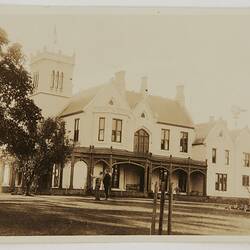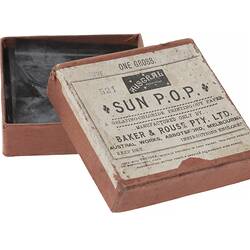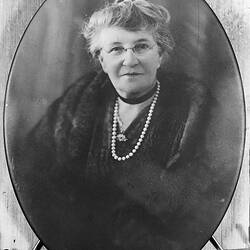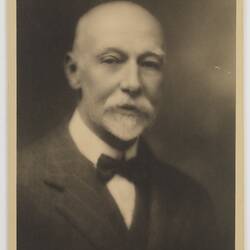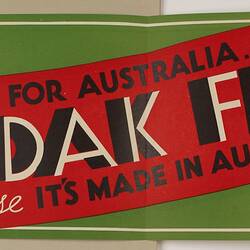Summary
Newspaper clipping from 'The Argus' from 18 April 1929 outlining a 30,000 pound legacy to Kodak Australasia Pty Ltd employees that was generously provided for in the will of Kodak managing director Thomas Baker after he died in December 1928.
The clipping was kept by Kodak employee James Gault, originally a photographic artist who later worked in various positions with Kodak, probably from about the early 20th century until about 1941, when he left to start a business with his son Robert who was an electrical engineer. Gault, along with 9 other senior staff, was left 300 pounds by Thomas Baker after he died and with these senior staff he is singled out and named in this newspaper clipping as a recipient.
According to the clipping, Kodak workers of more than eight years service were all provided for in Mr Baker's will, with most staff receiving from 40 to 200 pounds. Thomas Baker also specifically left an annuity to women with long service in the company, providing about 52 pounds per year during the lifetime of each of the eligible women employees. James Gault's many years of service and the esteem he was held in by Thomas Baker no doubt contributed to the generous legacy that he received.
Thomas Baker was well known for providing innovative benefits for his staff. He provided a medical doctor on site at the Kodak factory, a dining room for staff, and many other benefits including financially rewarding staff for productivity improvements and a very early superannuation scheme. Baker was also a prominent philanthropist. He established the Baker Institute with his wife Alice and his sister-in-law Eleanor Shaw. The Bakers also gave funds to other charities, including the Red Cross and the Limbless Soldiers. Thomas Baker was active in community leadership in other ways too, including being president of the Melbourne Rotary Club when he died.
Kodak manufactured and distributed a wide range of photographic products to Australasia, such as film, paper, chemicals, cameras and miscellaneous equipment. Its client base included amateur and professional photographers, as well as specialist medical and graphic art professionals who used photography, x-ray and other imaging techniques.
Description of Content
Interior photograph of workers inside a factory. Men and women are shown, with the women lined up on the right hand side of a long piece of equipment, perhaps containing sinks, with a man looking over a low wall on the left side of the space. The interior is brick, and there is a mezzanine at the back of the space. There are various pipes, wooden barrels and crates in the space, with racking on the right hand side.
Physical Description
Newspaper clipping printed in black ink.
More Information
-
Collection Names
-
Collecting Areas
-
Organisation Depicted
Kodak (Australasia) Pty Ltd, Southampton Crescent, Abbotsford, Greater Melbourne, Victoria, Australia, 18 Apr 1929
-
Person Named
Mr Thomas Baker - Kodak Australasia, Pty Ltd, Southampton Crescent, Abbotsford, Greater Melbourne, Victoria, Australia, 18 Apr 1929
-
Format
Photograph, Black & White
-
Inscriptions
Top, printed, black ink: 'MR. T. BAKER'S WILL. / LEGACIES TO EMPLOYEES. / £30,000 DISTRIBUTED.'
-
Classification
Manufacturing & industry, Photographic products, Construction sites
-
Category
-
Discipline
-
Type of item
-
Keywords
Photography, Manufacturing, Industries, Employees, Workers, Factories, Photographic Supplies, Staff Relations, Death & Mourning, Wills, Legacy, Industrial Relations

